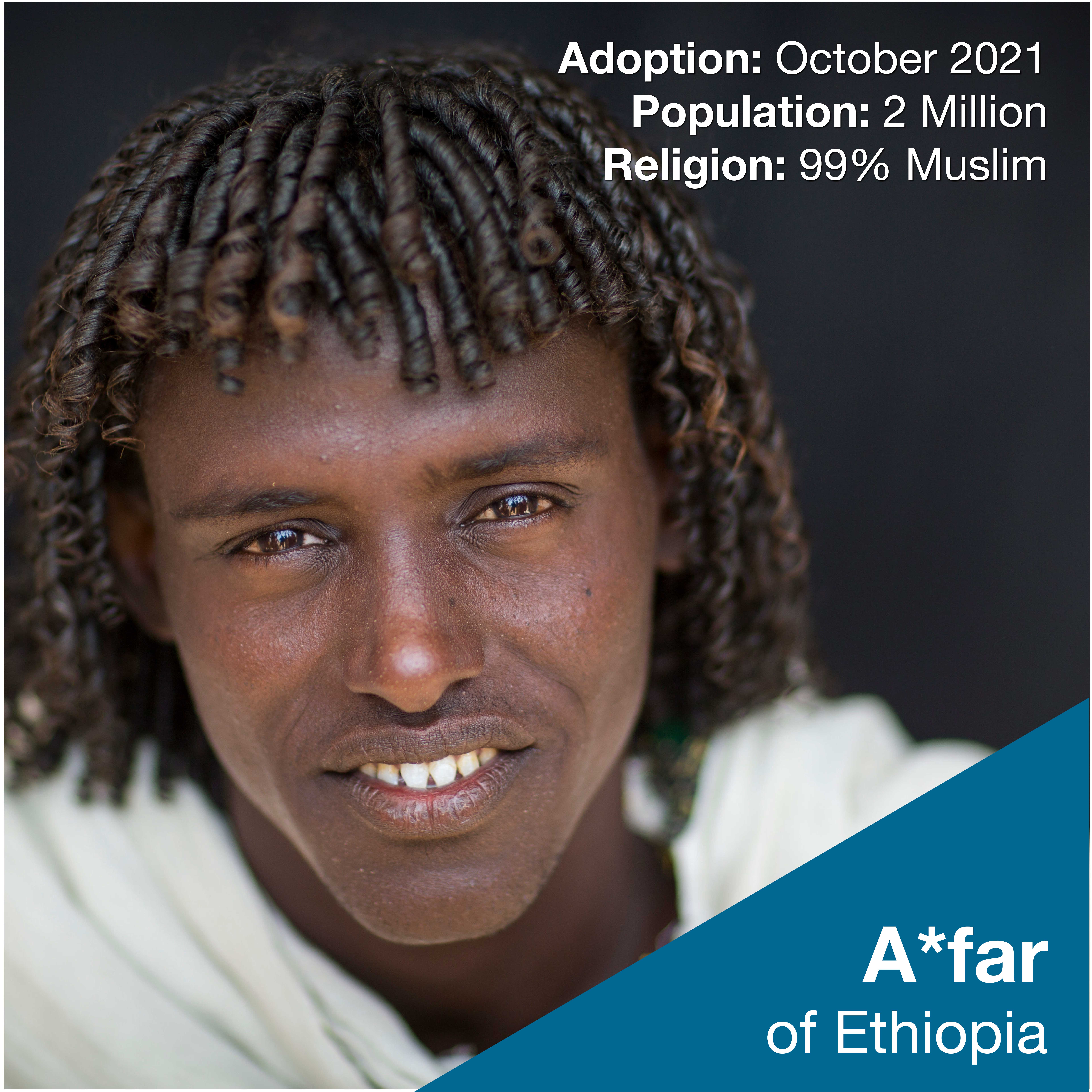
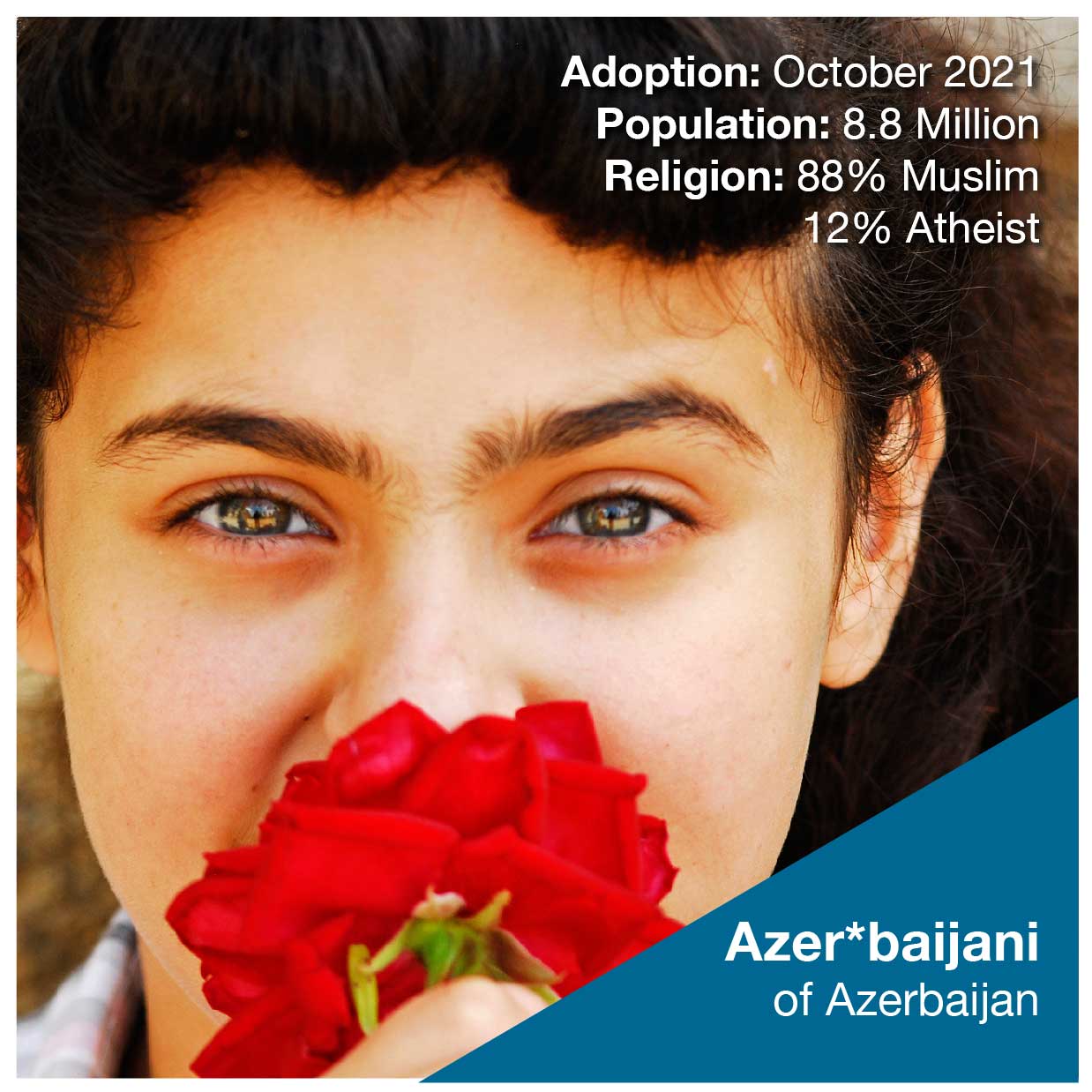
UPG Adoption
"I believe that God's greatest purpose for Grace Fellowship Church is located outside of Grace Fellowship Church. The people in Southeast Asia needed a church to be birthed in Katy, TX that would reach out to them." - Jim Leggett, Sr. Pastor
What it means to Adopt an Unreached People Group:
At Grace Fellowship Church, adopting a UPG means standing in the gap on behalf of the people in that people group who do not have access to the lifesaving truth that Jesus is Lord and for the fieldworkers serving among our UPGs. We do this by praying, giving, going, serving, and learning in many ways such as:
- Every Sunday as a church, praying for the salvation of the Ban*jar, Mak*asar, Bug*is, Raj*put, Af*ar and Azer*baijani people.
- On the fourth Thursday every month we hold a UPG prayer meeting to lift up our UPGs and those faithfully serving among them in the Great Southwest Prayer Center.
- We financially support the field workers and project work among our UPGs.
- We are sending Grace Fellowshippers to serve short-term and long-term (3+ years) among our UPGs.
- Grace Fellowship Small Groups adopt UPGs and serve as encouragement to the field workers through e-mail correspondence and their dedication to prayer.
Grace Fellowship Church has adopted six Unreached People Groups (UPGs), with a lifetime church goal of ten!
I believe that God's greatest purpose for Grace Fellowship is located outside of Katy. The nations needed a church to be birthed in Katy, TX that would not stop praying, giving, and going." - Jim Leggett, Sr. Pastor
You can Get Involved by:
1) Praying for our UPGs using the prayer resources available at the Great Southwest Prayer Center and sign up to receive prayer prompts via text.
2) Joining the International Audience of One Prayer Group Meeting, the 4th Thursday of every month, from 6-8pm, in The Great Southwest Prayer Center for worship and prayer in multiple languages for the nations and our adopted UPGs. All are welcome to come and go as your schedule permits. You are also welcome to join the prayer team to offer a prayer or song in your native language. No registration is needed.
Questions? Contact Son at STo@WhatIsGrace.org
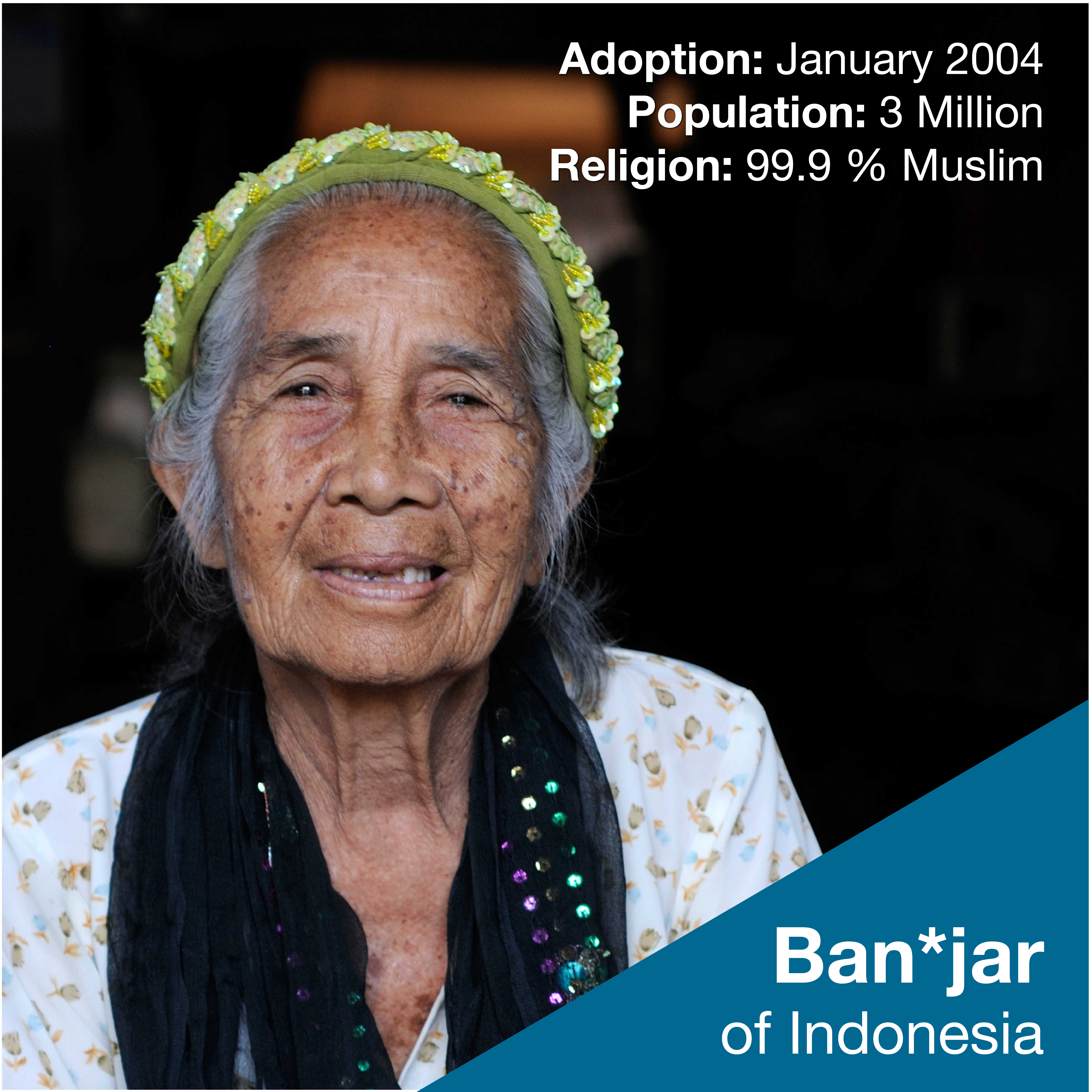
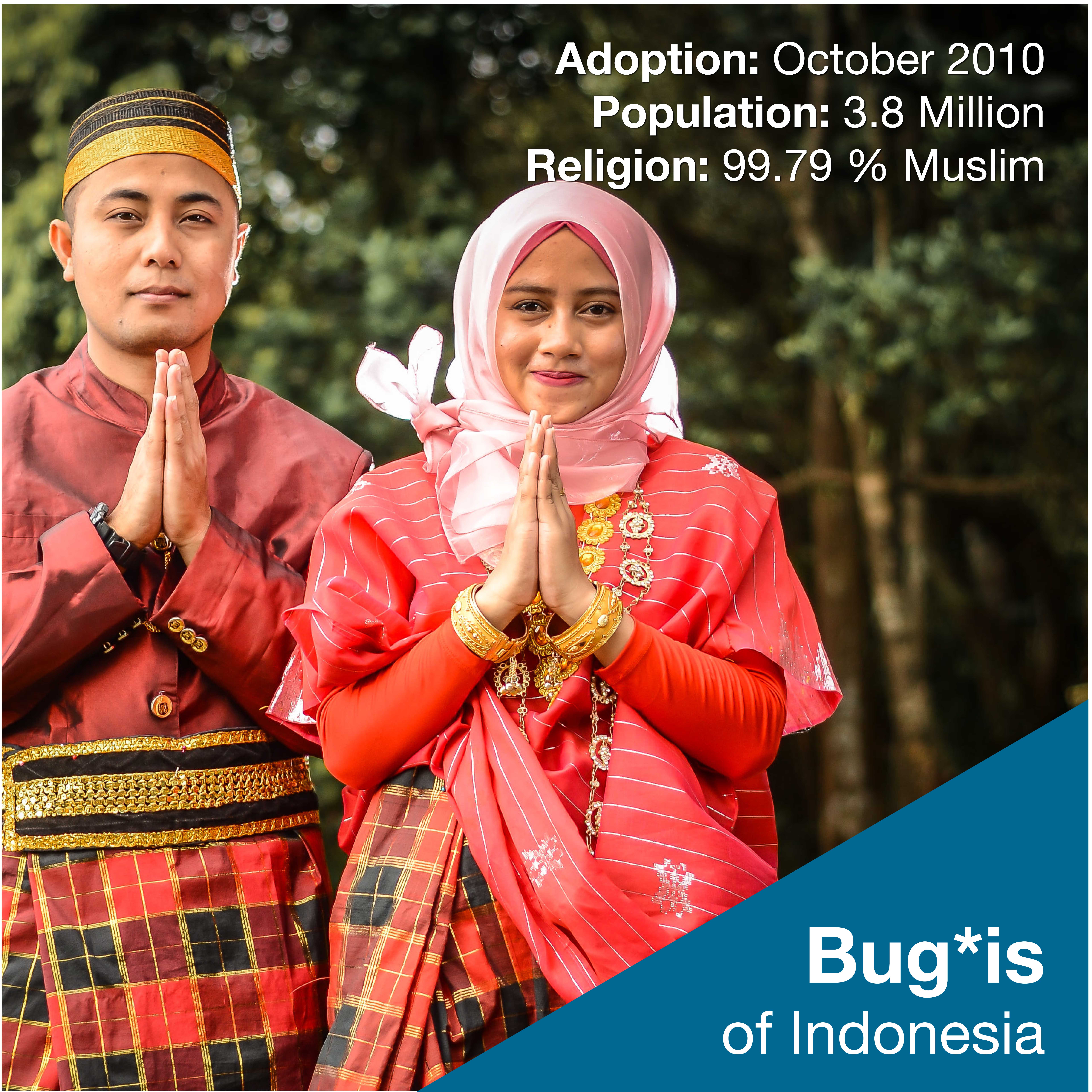
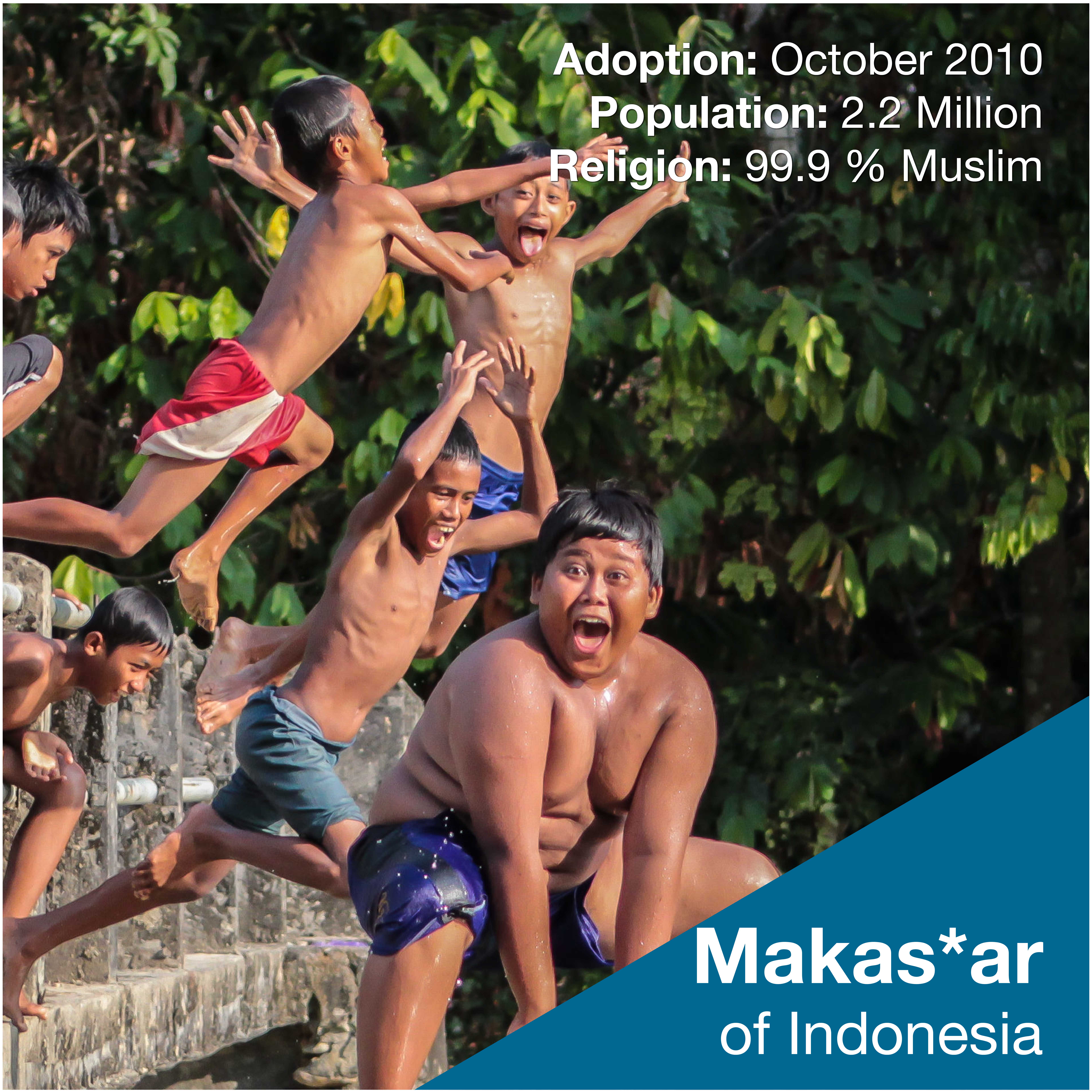
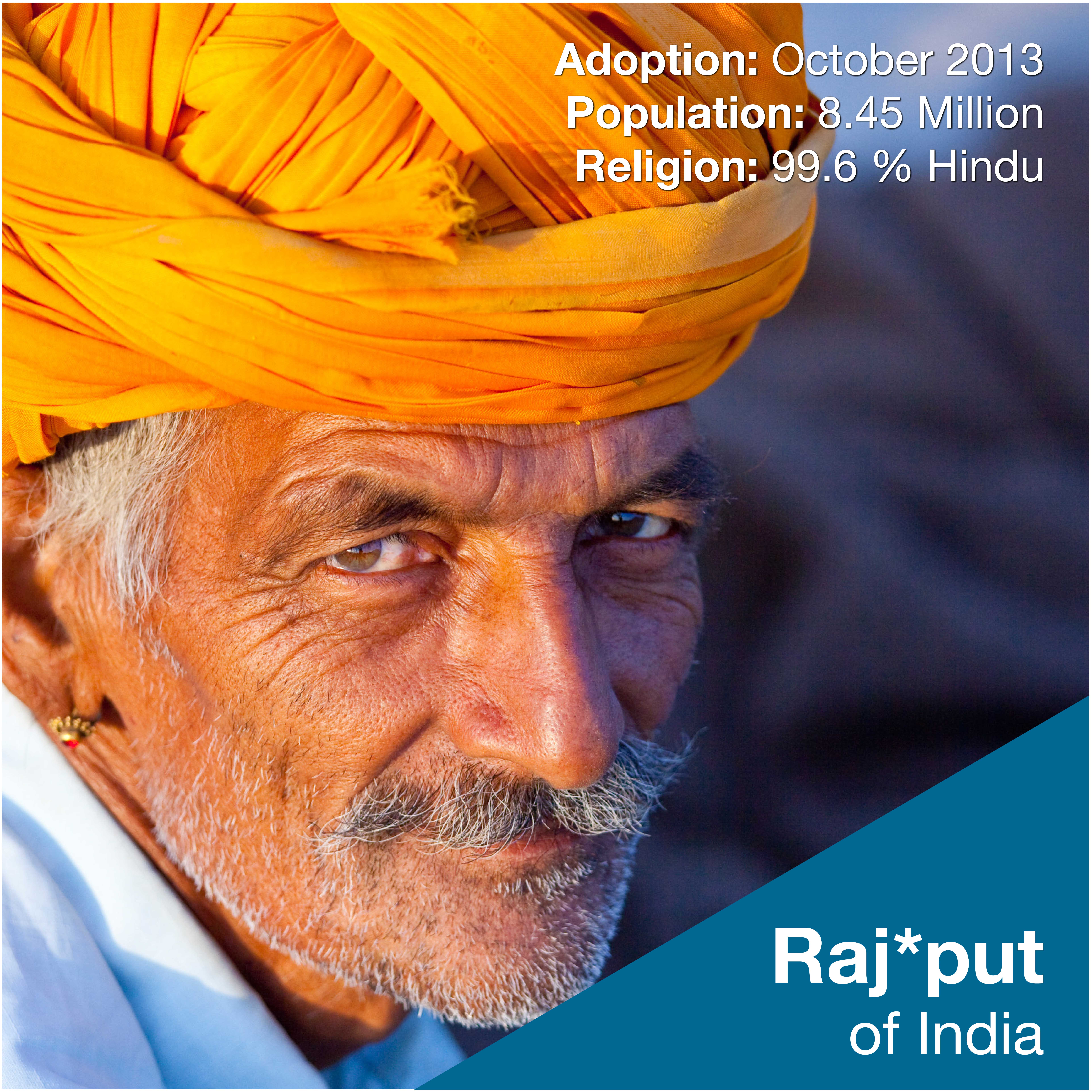


Grace Fellowship's Adopted Unreached People Groups
UPGs (Unreached People Groups)
What it means to Adopt a UPG:
At Grace Fellowship Church, adopting a UPG means standing in the gap on behalf of the people in that people group who do not have access to the lifesaving truth that Jesus is Lord and for the fieldworkers serving among our UPGs. We do this in many ways such as:
- Every Sunday as a church, praying for the salvation of the Ban*jar, Mak*asar, Bug*is, Raj*put, Af*ar and Azer*baijani people.
- On the first Sunday of each month we hold UPG prayer meeting to lift up our UPGs and those faithfully serving among them. This meeting is open to everyone. (12:30pm in the Prayer Center)
- We financially support the field workers and project work among our UPGs.
- We are sending Grace Fellowshippers to serve short-term and long-term (3+ years) among our UPGs.
- Grace Fellowship Small Groups adopt UPGs and serve as an encouragement to the field workers through e-mail correspondence and their dedication to prayer.
UPG 1 Ban*jar
UPG #1 Ban*jar
We adopted our 1st UPG from SE Asia in 2004. This UPG represents 3 million people with only 60 known believers in Jesus Christ. We are trusting God for 150,000 souls.
- Name: Ban*jar
- Adoption Date: January 2004
- Population: 3 million
- Location: Indo*nesia
- Language: Ban*jar
- Religious Make Up: 99.9 % Muslim .01 % Christian
Introduction and History
The southern and eastern coast of Kalimantan is home to the Ban*jar people who live along the rivers. The majority of Ban*jar live in Southern Kalimantan. Although they are devout Muslims and known for their strong and proud Muslim identity, the Ban*jar proudly trace their origins to a Hindu kingdom. The Ban*jar also have a deep animist history and two distinct lines of authority and control. The political line of Ban*jar Prince Suruanata and Princess Junjung Buih, and the religious line of Sheik Al-Ban*jari. Legend has it that Princess JJB was chosen from the Spirit Kingdom and upon his defeat of a white sea dragon, Prince Suri proved a suitable consort. Their descendants became the ruling families of the Ban*jar. In the 1500s, the prince’s nephew overthrew him and upon his vow of victory, declared that all Ban*jar embrace Islam. Yet the true Islamic stronghold came with the arrival of Sheik Al-Ban*jari who had studied for 30 years at Mecca and is considered a spiritual father, holy man and was gifted with supernatural powers. Stories of this family line are filled with spiritworld, magic, marriages within family lines, and much bloodshed. Today thousands of these descendants hold influential positions all over Indonesia.
What are their lives like?
Ban*jarmasin, the capital city of South Kalimantan, is the political, economic and spiritual center of the Ban*jar culture. It is often called the Venice of Indonesia because of its many rivers and canals. Parts of the city are below sea level so houses are built on stilts over the river. Most find their livelihood through farming or plantation work near the rivers. Trade, transport and mining are also prominent occupations. The Ban*jar have limited development of education, health care and water purification.
What are their beliefs?
Islam and animism influence every aspect of Ban*jar life. Ban*jar identity is inseparable from the Islamic religion. Religion is the primary force in controlling crime, such as thievery and gambling. Since the period of Dutch colonialism, the Ban*jar have looked suspiciously on government schools as attempting to secularize their children. Modern Islamic schools hold identity as government schools.
- *Asterisks are included for security purposes.
- Content is provided by The Joshua Project
UPG 2 Makas*ar
UPG #2 Makas*ar
We adopted UPG #2 in 2010. They represent 2.2 million people. We are trusting God for 110,000 souls.
- Name: Makas*ar
- Adoption Date: October 2010
- Population: 2.2 million
- Location: Indo*nesia
- Language: Makas*ar
- Religious Make Up: 99.9 % Muslim .01 % Christian
Introduction and History
The Makas*ar inhabit the southern part of the southwestern peninsula of Sulawesi. The heart of their area is Makas*ar, the capital city of the province of South Sulawesi. The past five hundred years show a long history of political struggle between the Makas*ar and Bug*is people. Domination of the Bug*is became prevalent after they aligned themselves with the Dutch in the 1660s when the Bug*is gained political power which can be seen to this day. In 1996, Indonesia’s strong central government gave way to a new policy giving more autonomy to the provinces. The people of South Sulawesi now have a greater opportunity to shape their own future. However, corruption continues to be a serious problem. Misuse of public funds and favoritism often undermines projects and policies intended to benefit the people.
What are their lives like?
Makas*ar gained prominence as the major shipment point for spices bound for Europe. Today it continues to be one of Indonesia’s important seaports, with distribution and transshipment for goods from Europe and Asia. Exports include coffee, teak, spices, rubber, rattan, and gums and resins. The city’s large modern airport makes it a major airline hub bringing many business travelers and tourists to the city. It is also a commercial center, with a large central market. Industries include the manufacture of cement and paper. The city hosts large government and private universities with tens of thousands of students.
Makas*ar has representatives of all 42 ethnic groups native to South and West Sulawesi and migrants from most of the other provinces in Indonesia. The Makas*ar make up around 65 percent of the city’s residents. The Makas*ar and Bug*is are the two prominent people groups. These two people groups are very similar to each other. It is said that while the Bug*is may be considered more prideful and sophisticated, the Makas*ar are conservative, humble faithful people. This may be the reason more Makas*ar have come to accept Jesus in recent years. They are predominately rice farmers. Otherwise, they are very similar to the Bug*is and the two people groups get along quite well.
What are their beliefs?
The Makas*ar are almost all Muslim. Like many other ethnic groups in the area, the Makas*ar are known as people who always try to preserve their cultural heritage such as language, traditional festivals, customs, ethnic solidarity, and ethnicity pride.
- *Asterisks are included for security purposes.
- Content is provided by The Joshua Project
UPG 3 Bug*is
UPG #3 Bug*is
We also adopted UPG #3 in 2010. They represent 3.8 million people. We are trusting God for 190,000 souls.
- Name: Bug*is
- Adoption Date: October 2010
- Population: 3.8 million
- Location: Indo*nesia
- Language: Bug*is
- Religious Make Up: 99.79 % Muslim .01 % Christian .2 % Other
Introduction and History
The Bug*is live in the province of South Sulawesi. The past five hundred years show a long history of political struggle between the Bug*is and Makas*ar people. Domination of the Bug*is became prevalent after they aligned themselves with the Dutch in the 1660s when the Bug*is gained political power which can be seen to this day. In 1996, Indonesia’s strong central government gave way to a new policy giving more autonomy to the provinces. The people of South Sulawesi now have a greater opportunity to shape their own future. However, corruption continues to be a serious problem. Misuse of public funds and favoritism often undermines projects and policies intended to benefit the people. The only significant number of Bug*is to become Christian was around 1940 when several hundred Bug*is became Christian. This halted with the Japanese occupation and then was strongly opposed during the 15 year blood Islamic revolt in South Sulawesi beginning in 1950.
What are their lives like?
Most Bug*is make their living by hunting, fishing, farming, raising livestock, or making handicrafts. While most Bug*is live in small towns or villages, more and more are moving to the cities particularly Makas*ar. Bug*is are also prominent in government in both the local and national levels.
What are their beliefs?
The vast majority of Bug*is are Muslim. They have a reputation of being fanatic in their practice. Being Muslim is an essential part of the ethnic identiy of being Bug*is. Wearing the jilbab, or headscarf has returned as a requirement for Muslim female government workers while being a chosen way of respect and modesty by many modern, educated women. However, Islamic practices among the Bug*is are rarely orthodox. Many are involved in animistic beliefs such as seeking powers from the spirits of the dead, consulting dukuns (shamans) and using amulets or charms. Although shamanistic practice is contrary to orthodox Islam these shamans wield exceptional power and are usually honored by others. People go to them for just about everything including healing and exorcisms, seeking help to get a job, cursing an unliked neighbor or even seeking protection and blessing before going to Mecca.
- *Asterisks are included for security purposes.
- Content is provided by The Joshua Project
UPG 4 Raj*put
UPG #4 Raj*put
We adopted UPG #4 in October of 2013. They represent 8.45 million people in India. We are trusting God for 420,000 souls.
- Name: Raj*put
- Adoption Date: October 2013
- Population: 8.45 million
- Location: Ind*ia
- Language: Hindi
- Religious Make Up: 99.6 % Hindu .02 % Christian .04% Buddhist .35% Other
Introduction and History
Raj*put means “sons of the king” in their language. They have ruled central and northwestern India for more than 2000 years, and when the British controlled India they had a treaty with the Raj*put to govern their areas. When India gained its independence from the British at the end of World War II and became the world’s largest democracy. The Raj*put fall within the second highest Indian caste and were known historically as the warrior and rulers caste. They are a prideful people full of history with blood lines of lineage. The Raj*put are scattered throughout northern India, with 8M living in Rajasthan, with a large concentration in the capital city of Jaipur.
What are their lives like?
Once India gained its independence at the end of WWII, the Raj*put were without a role. However, they continue to be viewed as leaders and rulers, and today you will find many of them as mayors of villages, state government leaders, and business leaders. Raj*put’s control much of the country’s wealth and political power and are an educated people. Most can speak English which is the legal and business language of India. While outwardly they appear self-reliant and proud, inwardly the Raj*put are searching for recognition and appreciation in a country that no longer needs kings and warriors. They are a benevolent people taking care of the less fortunate through philanthropic efforts.
What are their beliefs?
Almost all Raj*puts are Hindu (5% Muslim) and mostly speak Hindi. Hinduism is an ancient religion with no founder or known date of origin. The term "Hinduism" simply derives from the word "India" and refers to a wide variety of religious traditions and philosophies that have developed in India over thousands of years. Most Hindus worship multiple deities, believe in reincarnation, value the practice of meditation, and observe many festival holidays. There are essentially no Christians in this UPG. Turning to Christianity would be seen as forsaking their forefathers and glorious history. Many young people go along with the old beliefs because this is their ingrained cultural worldview. They do not want to hurt their families and their legacy.
- *Asterisks are included for security purposes.
- Content is provided by The Joshua Project
UPG 5 Af*ar
UPG #5 Af*ar
We adopted our 5th UPG in October 2021. They represent 2 million people with only 500 known believers in Jesus Christ. We are trusting God for 100,000 souls.
- Name: Af*ar
- Adoption Date: October 2021
- Population: 2 million
- Location: Ethi*opia
- Language: Af*ar
- Religious Make Up: 99% Muslim
Introduction / History
The Af*ar people of Ethiopia live on the earth's hottest and driest spot, the Danakil Desert, which is nearly 400 feet below sea level with daytime temperatures reaching up to 125°F in the sun. The Afar are herdsmen and mine for salt, living a nomadic family life in huts.
The Af*ar (Danakil) claim to be descendants of Ham (Noah's son). They are located in the East African countries of Djibouti, Ethiopia, and Eritrea. They prefer to be known as the Af*ar, since the Arabic word "danakil" is an offensive term to them. They are a proud people, emphasizing a man's strength and bravery. Prestige comes from killing one's enemies.
The Af*ar consist of two subgroups: the Asaemara ("red ones"), who are the more prestigious and powerful nobles living primarily in the area of Assayita; and the Adaemara ("white ones"), who are the commoners living in the desert areas. Those who live in the desert inhabit one of the most rugged regions in the world, known as the Af*ar Plain or the Danakil Desert. One area, called the Danakil Depression, consists of a vast plain of salt pans and active volcanoes. Much of it lies 200 feet below sea level and has daily temperatures as high as 125 degrees F. The average yearly rainfall is less than seven inches.
What Are Their Lives Like?
Most of the Af*ar herd sheep, goats, cattle, and camels. A man's wealth is measured by the size of his herds.
Not all of the Af*ar are herdsmen. Many of those who work in the Danakil Depression pry loose slabs of solid salt during the dry season, supplying ready-to-use salt in the form of crude blocks. Some of them live in apartment buildings in the country's capitol city, Addis Ababa. They remain there year round and work in government jobs such as the Af*ar broadcasts of the Ethiopian radio station.
Meat and milk are the major components of the Af*ar diet. Milk is also an important social "offering". For instance, when a guest is given fresh warm milk to drink, the host is implying that he will provide immediate protection for the guest. If a person is killed while under the protection of an Af*ar, his death must be avenged as if he were a member of the clan.
The Af*ar live in camps surrounded by thorn barricades, which protect them from the attacks of wild animals or enemy tribesmen. Their oval-shaped huts, called ari, are made of palm mats and are easily moved.
What Are Their Beliefs?
Early in their history, the Af*ar were heavily influenced by the Islamic religion; and today, Islam is still held in great esteem. The people do not eat pork and rarely drink alcohol. Those who can afford to do so, make a pilgrimage to Mecca. In addition, many pre-Islamic beliefs and customs are also prevalent among the Af*ar. They believe that certain trees and groves have sacred powers. They also have various religious rites such as anointing their bodies with ghee (a type of butter). Spirits of the dead are believed to be very powerful, and a "feast of the dead", called Rabena, is celebrated each year. They also give annual offerings to the sea to ensure safety for their villages. Many people wear protective leather amulets that contain herbs and verses from the Koran.
- *Asterisks are included for security purposes.
- Content is provided by The Joshua Project
UPG 6 Azer*baijani
UPG #6 Azer*baijani
We adopted our 6th UPG in October 2021. This UPG represents almost 9 million people in the country Aze*rbaijan and over 30 million worldwide. Less than .5% are known believers in Jesus Christ. We are trusting God for 550,000 souls in their home country.
- Name: Azer*baijani
- Adoption Date: October 2021
- Population: 8.8 million (in Azer*baijan)
- Location: Azer*baijan
- Language: Aze*ri
- Religious Make Up: 88% Muslim; 12.5 % Atheist/Non-religious
Introduction / History
Azer*baijan is located in the Caucasus Mountain region on the western shore of the Caspian Sea. It is there, in the land of the ancient Medes, that we find more than eight million Azer*baijanis (also known as the Aze*ri). The name "Aze*ri" is thought to have come from the fourth century ruler, Atropat, who governed the area that is now northwestern Iran. However, it may have been derived from azer, the Persian word for fire.
Shortly after Jesus' death and resurrection the gospel was introduced to this region and there is a rich tradition of Christian influence and architecture under the "Alban" kingdoms during the first centuries of church history. Islam was introduced into the area during the seventh century A.D., eventually becoming the dominant religion, and has been practiced there in various forms ever since.
What Are Their Lives Like?
Azer*baijan is a low, fertile plateau located in the South Caucasus bordered by the Caspian Sea on the East and the Caucasus Mountains in the North and West. The region's largest city, Baku, and its surrounding areas are low and not covered with trees, but its border areasare covered with thick forests.
The climate ranges from warm to sub-tropical temperatures. Grain, grapes, cattle, sheep, and goats are raised in abundance. Vegetables, fruits, and some teas are also important products. Although the land is ideal for farming, about one fourth of the population now lives in Baku, the nation's capital, working in industry. Energy resources including petroleum and natural gas are major exports and economic factors.
Modern life in Azer*baijan, as in most countries, varies widely from person to person and family to family. The affluent live in ultra-modern skyscraper buildings or large Villas in the suburbs or scenic areas. The poor often live in small makeshift homes, dilapidated apartments, or rustic villages. Most people fall between these two extremes. Many people work in the energy sector, agriculture, or other industries. Most urban people and many in the other regions use modern electronics for many aspects of life. Education is valued and literacy is very high.
The Azer*baijani diet consists mainly of rice pilaf and a variety of grilled and boiled meats including beef, goat, and lamb. Traditional dishes include bozartma (mutton stew), dovga (a soup made from yogurt), meat, and herbs. Other dishes are dolma, khingal, kabab and dushbara. Tea and wine are popular drinks.
What Are Their Beliefs?
The Azer*baijanis are primarily Shi'ite Muslims, but there are a number of Sunni Muslims as well. Islam among the Azer*baijani is a reflection of the historical ties that exist between Azer*baijan and Iran. Until the twentieth century, most Azer*baijani identified themselves as Muslims rather than Azer*baijani or Turks. They believe that being a "spiritual community of Islam" was much more important than being a nation.
In Azer*baijan, religious practices are less restrictive of women's activities than in most other Muslim countries. Most women have jobs outside the home, and a few have attained leadership positions. However, some evidence of the traditional, restrictive female role remains.
- *Asterisks are included for security purposes.
- Content is provided by Bethany World Prayer Center
